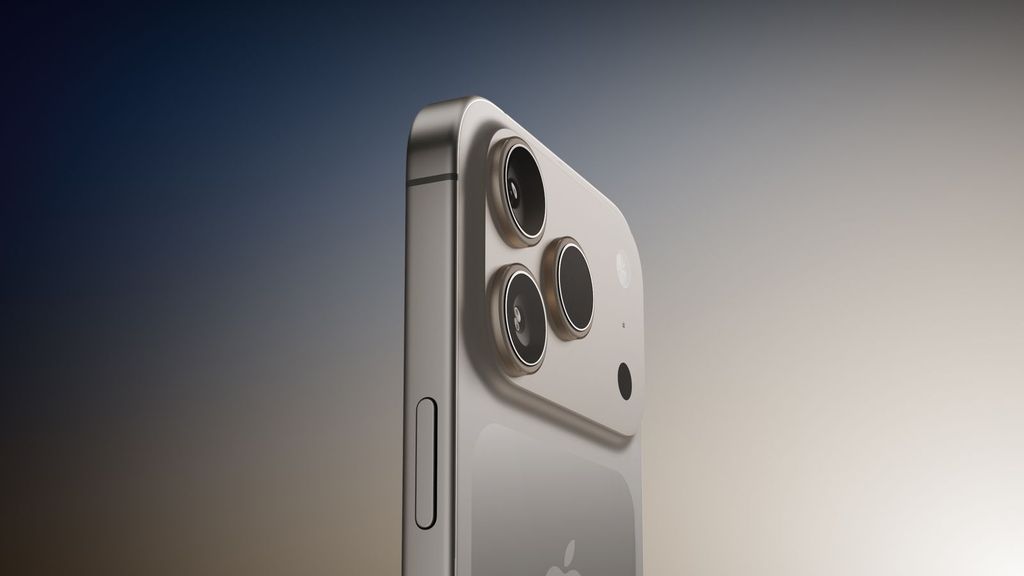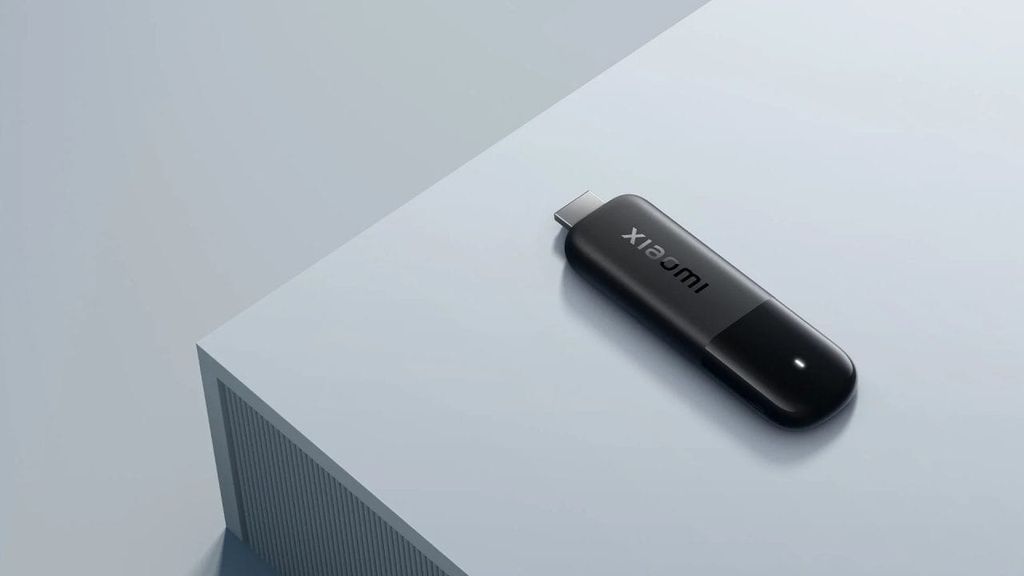- Matching (Score)
- Our verdict
- Competing TVs
- TV appearance
- Where to buy
- Contrast and black detail
- HDR effect quality
- Factory color reproduction
- Color reproduction after calibration
- Smoothness of tonal transitions
- Image scaling and smoothness of tonal transitions
- Blur and motion smoothness
- Console compatibility and gaming features
- Input lag
- Compatibility with PC
- Viewing angles
- TV efficiency during daytime
- TV features
- Apps
- Playing files from USB
- Sound
- Details about the matrix
XIAOMI A PRO 2026 Review
Available screen sizes:
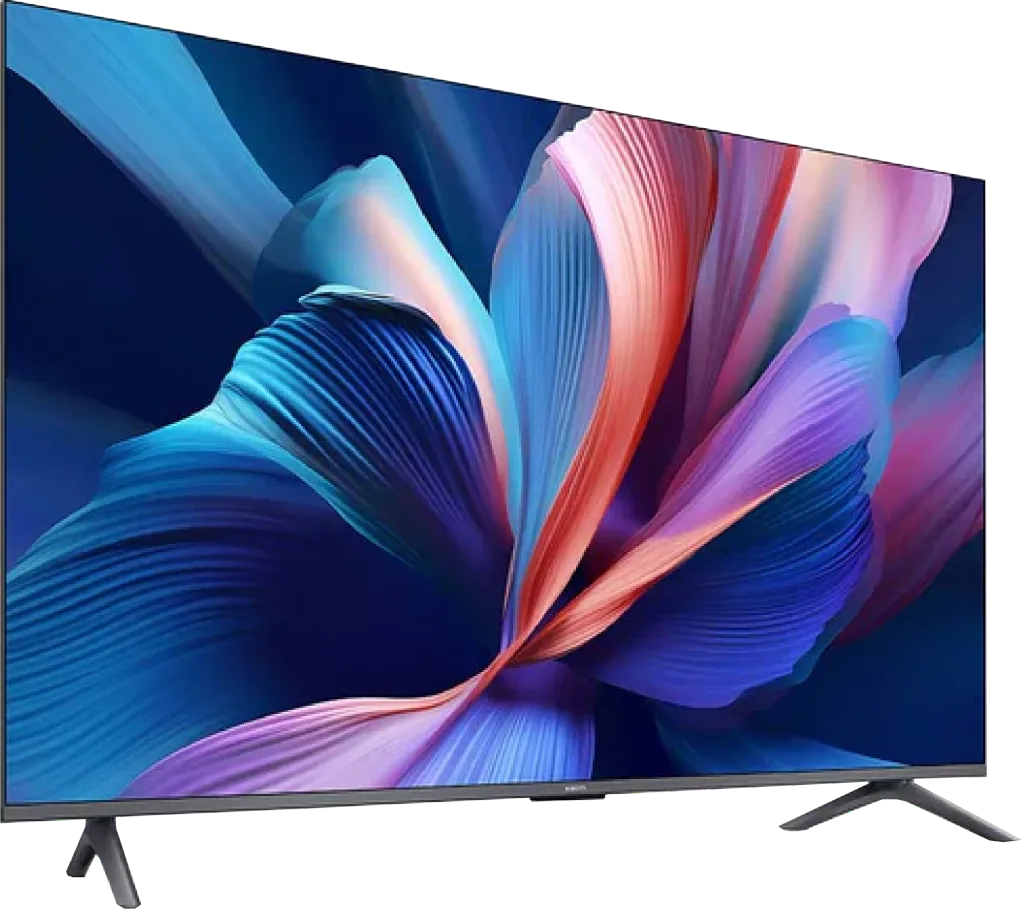
Complete the survey to find out the result
Panel type: LCD VA Refresh rate: 60Hz Brand: XIAOMI Resolution: 3840x2160 System: Google TV Model year: 2025
Phones, tablets, smartwatches… and for several years now also televisions. Xiaomi – the Chinese tech giant – is consistently expanding its presence in the world of consumer electronics and is increasingly boldly stepping into the TV segment. In 2026, a refreshed model from the A Pro series will be released for sale. Looking at last year's version, it was easy to spot areas where the manufacturer had plenty of room for improvement. The question is: this time, have they truly managed to learn from the previous year? We checked it out for you in this review.
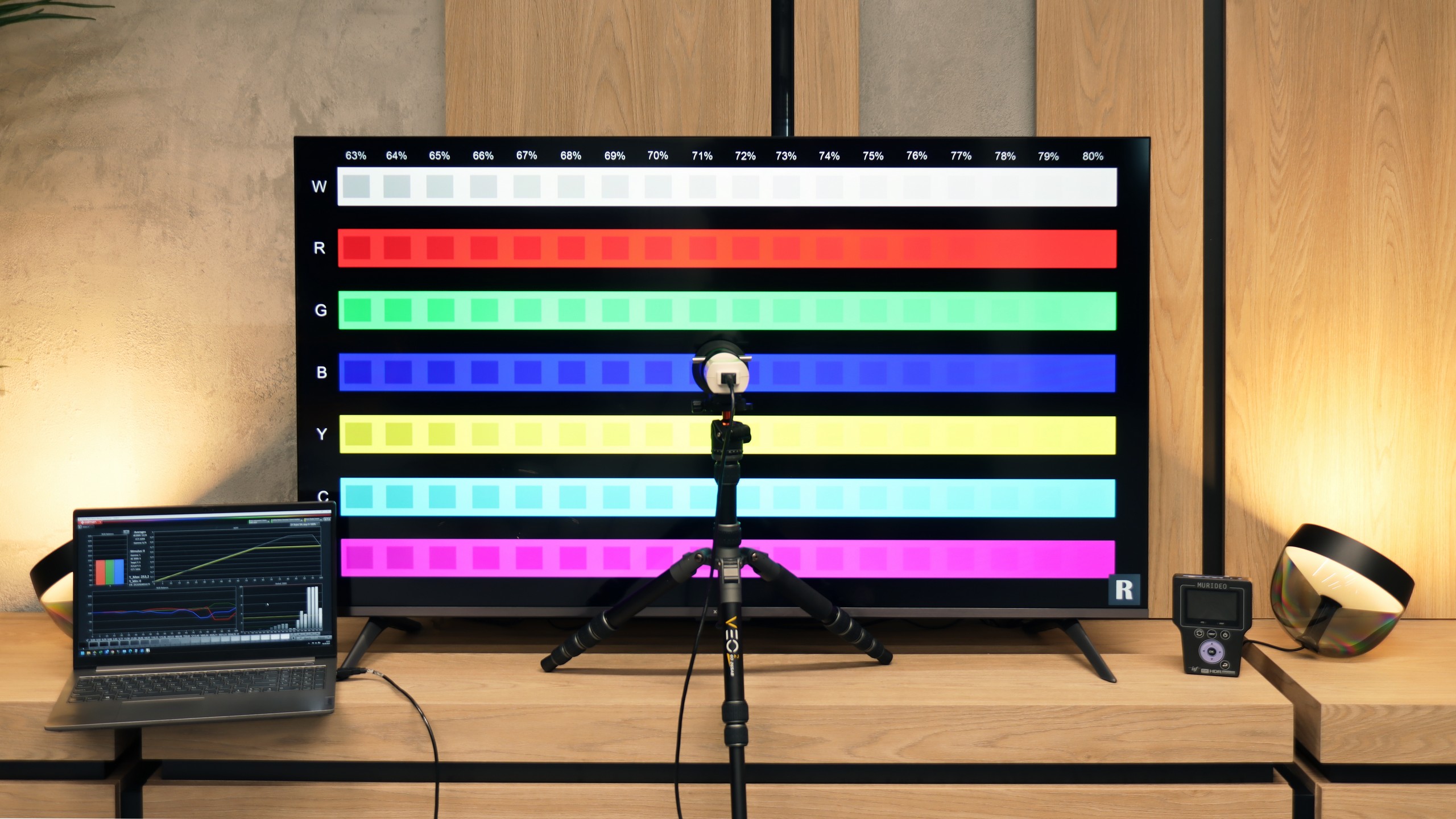
XIAOMI A Pro 2026 - Our verdict
5.6
Overall rating
Xiaomi A Pro 2026 is a television that, at first glance, doesn’t reveal significant changes compared to its predecessor. Someone might even think it’s just a copy of last year's model with a different sticker. And there’s some truth to that, as the main novelty, or rather the only noticeable difference, is the 120 Hz mode at lower resolutions. It must be said that Xiaomi has done well here; this addition really makes a difference – it’s not a solution for professional gamers, but a nod towards those looking for a smoother image during casual gaming. This is where the A Pro 2026 can stand out – with a simple yet clever idea that sets it apart in the “super budget” segment. Unfortunately, when we start looking at the television more broadly, the enthusiasm quickly wanes. Even though the year has changed on the calendar, most of the issues known from the A Pro 2025 are still with us – the system can still experience strange stutters, and the occasional errors can be quite frustrating. On top of that, there's a lack of any serious digital image processing tools, which worked quite decently last year. As a result, there are many limitations in the design that the competition in a similar price range is already trying to cover up in some way. When it comes to image quality, we won't sugarcoat it either. Brightness at the level of 200–300 nits doesn’t stand a chance against more demanding content. Sure, with simpler streaming content, you can watch something, but with high-budget productions, it’s immediately clear why the television costs what it does. The impression that we are viewing a flat image stripped of details accompanies us pretty much every time. And this brings us to the crux of the matter. The Xiaomi A Pro 2026 is a television for those who really don’t demand much. As a daily screen for series, news, or YouTube, it performs decently, especially thanks to its operating system, which is GoogleTV. Also, if someone is looking for budget equipment and would additionally like a taste of smoother gameplay in games thanks to the 120 Hz mode, they might even be satisfied. However, anyone expecting at least average image quality, a stable system, and proper functionality will soon notice that there are other budget models on the market that simply perform better.
Advantages
VA panel with good native contrast and decent blacks
Supports Game Boost mode at 120 Hz in 1080p and 1440p
Low input lag in 120 Hz mode
Google TV – vast selection of apps and services
Wide colour gamut coverage (around 94% DCI-P3)
Good colours after calibration in SDR mode
Supports popular audio formats (Dolby Atmos, DTS:X)
Large, easy-to-read remote with numeric keypad – convenient for seniors
Disadvantages
Low brightness
Lack of real support for HDR10+ and other more advanced HDR formats (e.g., Dolby Vision)
Significant limitations when working with PC – no chroma 4:4:4, heavy dithering, poor font readability
Poor viewing angles (typical for VA)
Clunky build, legs mounted in plastic with screws
Weird system issues – stuttering, errors with Miracast and sound switching
Upscaling and digital image processing is virtually non-existent
Very weak sound, practically no bass (we felt it performed worse than the "2025" model)
Movies and series in UHD quality
6.0
Classic TV, YouTube
5.7
Sports broadcasts (TV and apps)
4.7
Gaming on console
6.2
TV as a computer monitor
2.0
Watching in bright light
4.9
Utility functions
6.1
Apps
9.6
Sound quality
5.0
Complete the survey to find out what fits your preferences
XIAOMI A Pro 2026 - Competing TVs in this price range
XIAOMI A Pro 2026 - TV appearance
HDMI inputs: 3 x HDMI 2.0, 0 x HDMI 2.1 Other inputs: RCA (Chinch) Outputs: Toslink (Optical audio), eARC (HDMI), ARC (HDMI), Mini-Jack (Headphones) Network Interfaces: Wi-Fi 2.4GHz, Wi-Fi 5GHz, Ethernet (LAN) 100Mbps
Build quality: BuildQuality-Budget
Stand type: Legs
Bezel colour: Black
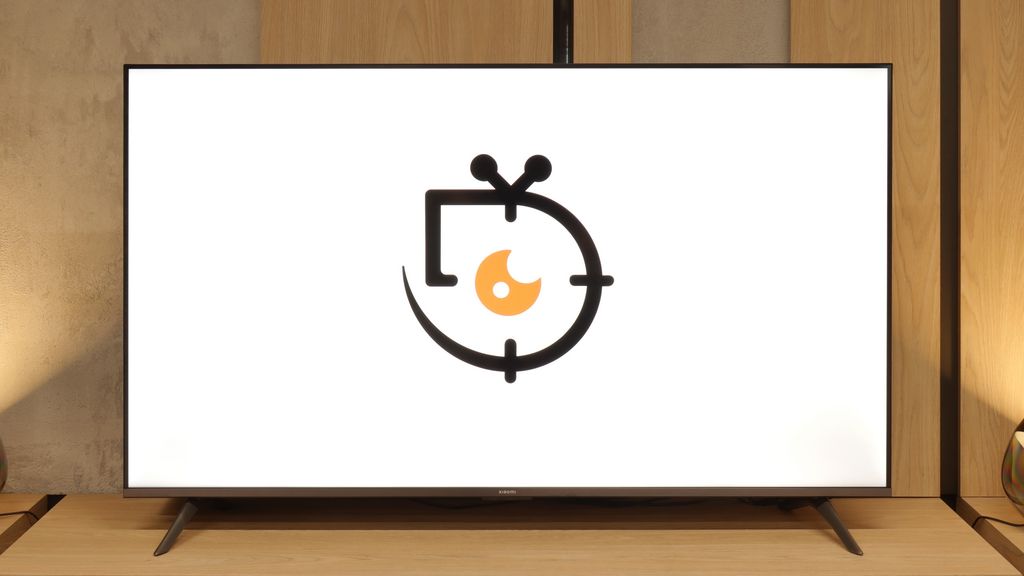
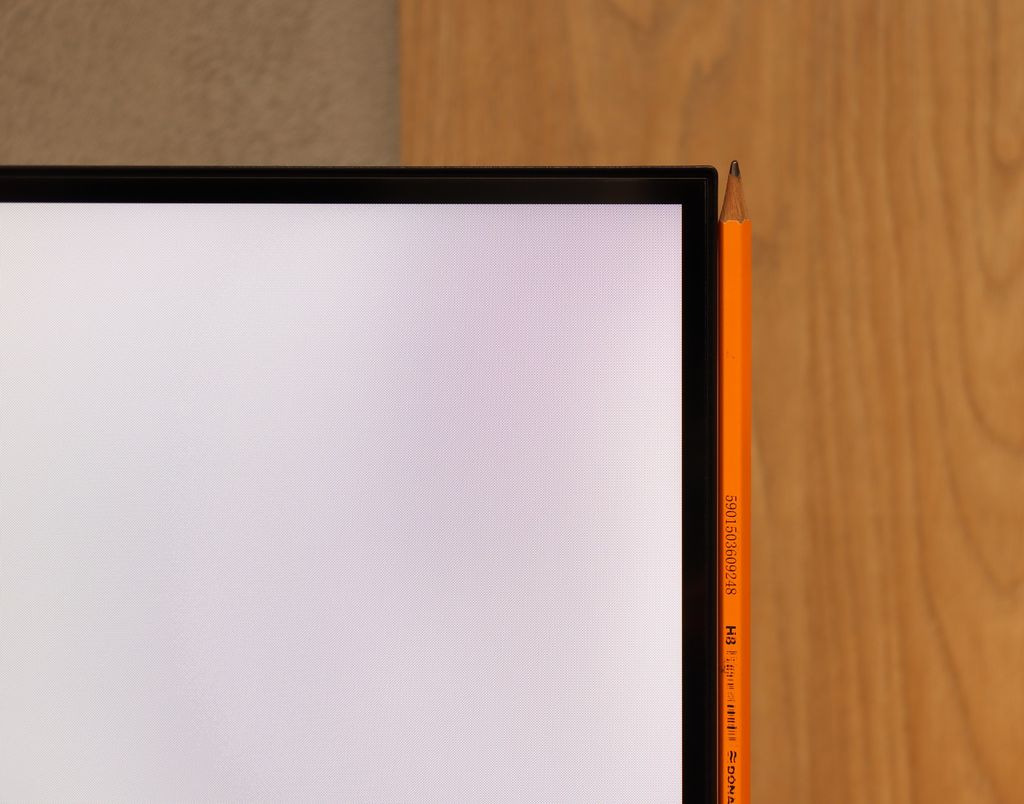
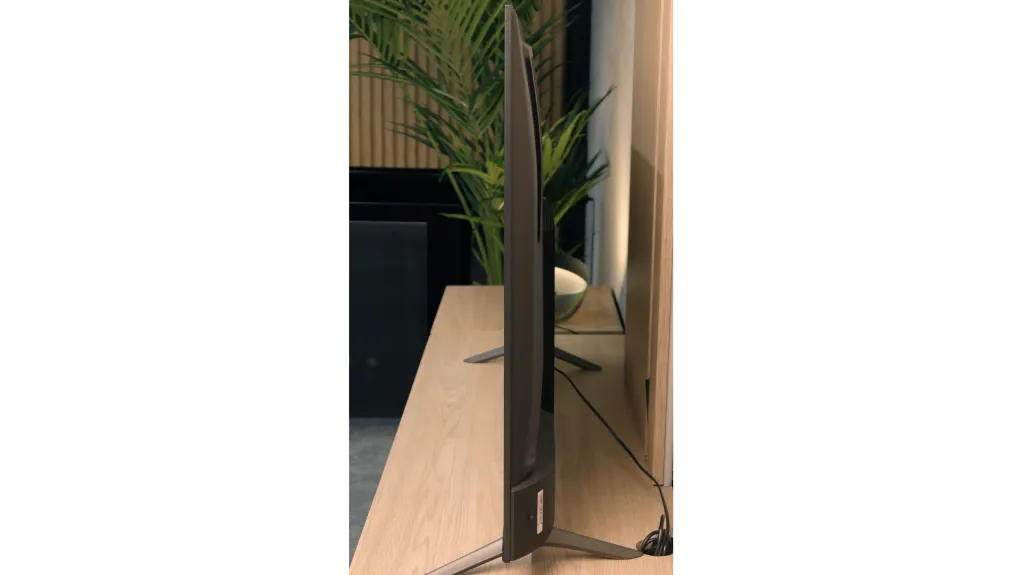
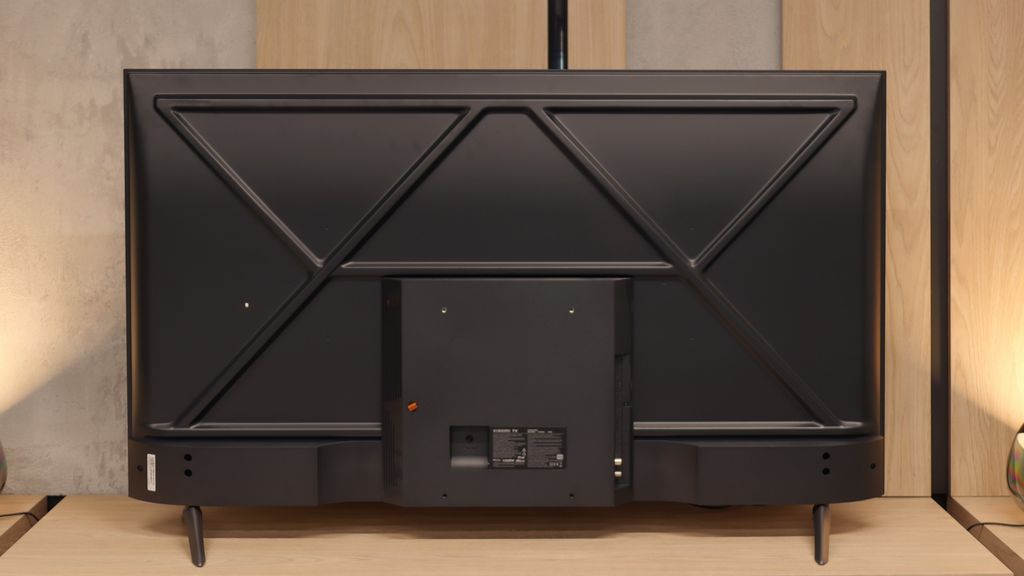
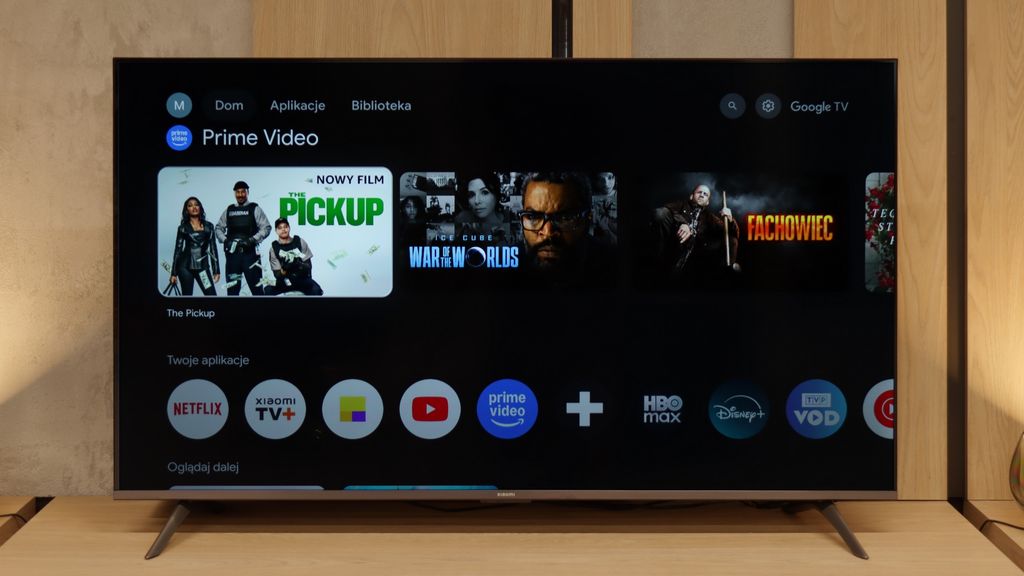
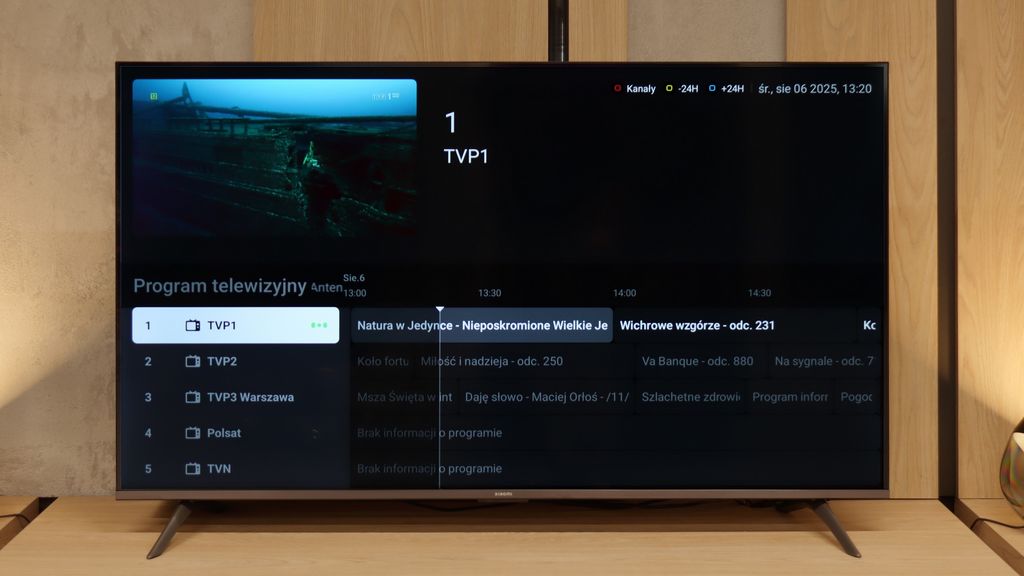
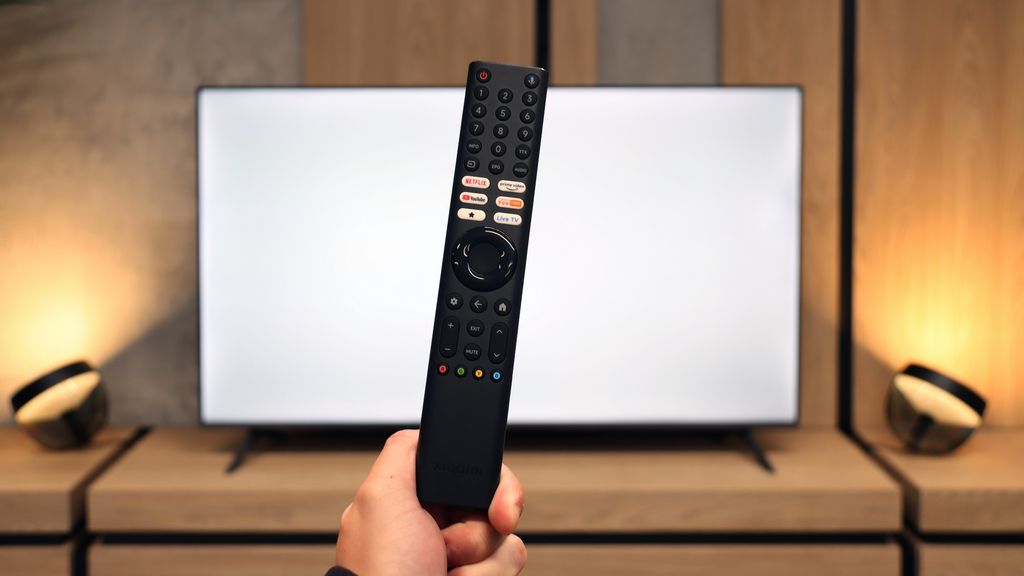
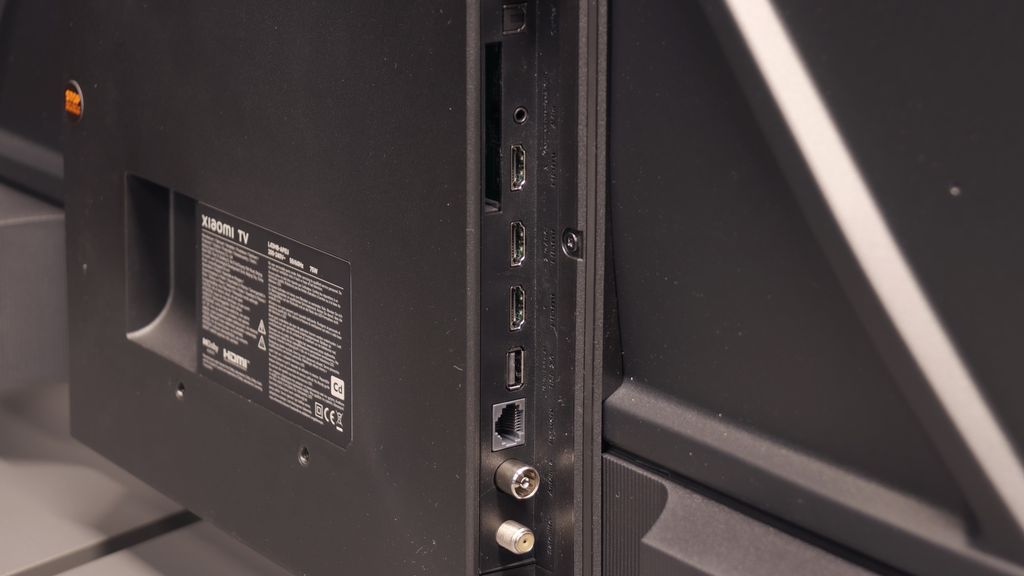
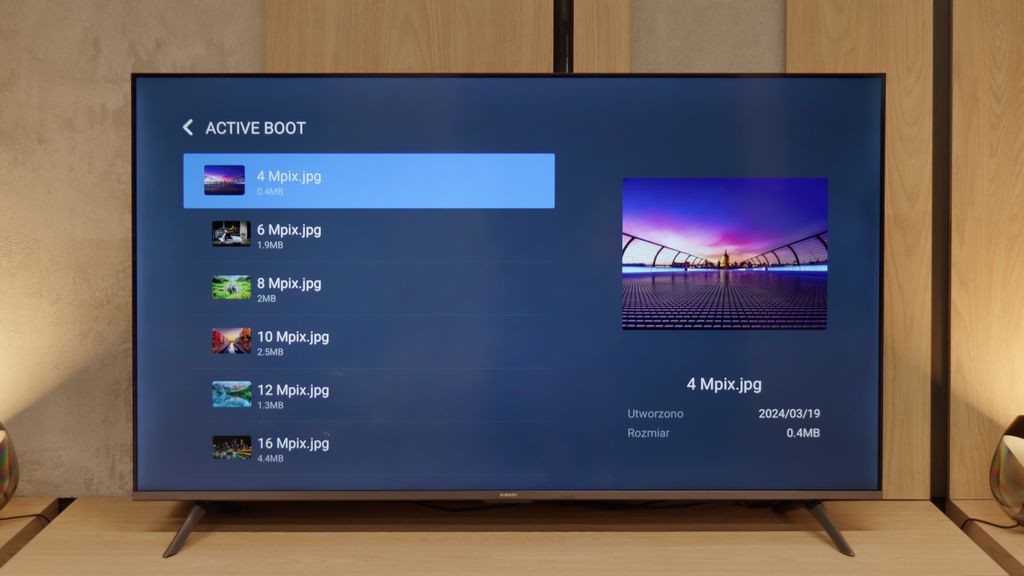
Stand: Fixed
Flat design: No
Accessories: Stand
The Xiaomi Series A Pro has never pretended to be premium gear (perhaps apart from the name), and at first glance, it's clear that this is a budget television. Sure, there are touches of modernity – the sleek metal borders around the screen can make a good impression, especially when viewed from the front. But just a glance from the side or back reveals that the charm fades a bit – the whole thing is quite clunky, and let's not kid ourselves, it's not "designer" gear. On the plus side, the metal legs look solid... until you start to assemble them. Because there's a little surprise waiting. You have to screw them straight into plastic. Yes, you read that right, in 2025, with a new television, the user has to "drill" their own hole in the base just to set the gear on its legs. This detail probably says the most about the character of the entire construction.
Buy in the best price
Select size:
XIAOMI A Pro 2026 - Contrast and black detail
6.1/10
Local dimming function: No

Result
5,000:1

Result
6,550:1

Result
7,300:1

Result
6,600:1

Result
4,900:1
Visibility of details in the lights:
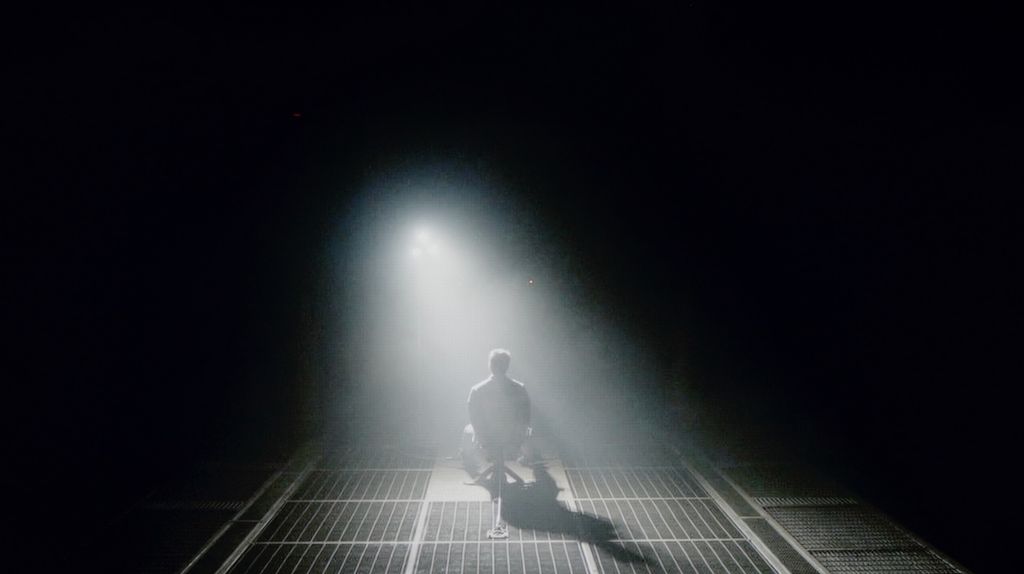
One of the biggest advantages of even a budget construction like the Xiaomi A Pro 2026 is the VA panel it uses. This is responsible for quite decent contrast, which in our measurements oscillated between 5000:1 and 7000:1. On the screen, this translates to a stable image with fairly deep blacks – something that's hard to find in competing models with IPS panels without local dimming. Xiaomi has also added a global dimming function for the entire panel. It sounds good, but… we advise turning it off straight away. Why? Because the screen behaves very strangely in darker scenes – sometimes it dims so much that you can hardly see anything, and other times it brightens so much that the already dark blue-black turns into a bright blue. At those moments, it felt as if the TV was simply damaged. Fortunately, without this function, the contrast looks really solid. It’s definitely not on the level of advanced TVs with local dimming, but in its price range, it will easily satisfy most users – especially if you’re not watching in a completely dark room and have at least some background light that effectively masks the imperfections of the "blue-black".
Halo effect and black detail visibility:
XIAOMI A Pro 2026 - HDR effect quality
4.1/10
Supported formats: HDR10, HDR10+, HLG Color gamut coverage: DCI P3: 93.6%, Bt.2020: 71.7%
Luminance measurements in HDR:

Result
220 nit

Result
248 nit

Result
322 nit

Result
315 nit

Result
326 nit
If you're counting on the cinematic HDR experience in the new Xiaomi A Pro 2026, it's best to temper your expectations. This TV is simply too dim to fully realise the potential of contemporary films or series designed for the highest quality image. Our measurements showed brightness levels in the range of 200–300 nits, which are values that are more suited to SDR content than to ambitious HDR productions. In practice, this means that while most films look decent, they certainly won't evoke the 'wow' effect that other TVs do. Fortunately, not everything is lost – credit has to be given to the PFS LED filter used here, a solution similar to the quantum dot technology found in QLEDs. Thanks to this, the coverage of the DCI-P3 colour palette reaches about 94%, resulting in vibrant, saturated colours in the vast majority of materials.
Scene from the movie “Pan” (about 2800 nits)

Scene from the movie “Billy Lynn” (about 1100 nits)

Of course, even knowing that this year's model from Xiaomi isn't really suited for watching HDR content in high brightness, we checked if it can adapt in some way. The effect can be described as twofold. Thanks to the built-in “HDR Tone Mapping” feature, simpler content – like a scene from the movie Billy Lynn – performed quite well. The TV regained some detail in the blacks and whites, and the brightest effects weren't overly blown out, although it was still slightly noticeable. On the other hand, when it came to demanding blockbusters designed for the highest image quality – like the film Pan – Xiaomi simply disappointed us. The brightest details, like a sunrise, were completely washed out, and the overall look was flat and just poor. And here, many of you might ask: can you actually watch HDR movies on such a TV? The answer is: it depends. If we’re talking about popular streaming materials or series that aren't so demanding – you can, and even quite decently. But with productions that prioritize cinematic image quality, you'll quickly understand where the low price of this TV comes from.
HDR luminance chart:
HDR luminance
What we saw while analysing the image in films like Mr and Billy Lynn was also reflected in other, very demanding film scenes with various HDR formats. Take, for example, the sequence tested with the horses, drenched in white. We hoped that the dynamic HDR10+ metadata, which according to the manufacturer's declaration should be supported in this year's models, would allow Xiaomi to recover at least some of the lost details. Unfortunately, we were met with a bucket of ice-cold water. The TV not only failed to correctly play such material but also… overexposed the scene even more than in standard HDR10. And this is yet another piece of evidence that, in the case of this model, HDR material should be avoided at all costs – because instead of cinematic emotions, we get a flattened image stripped of any details.
Static HDR10

Dynamic: HDR10+

Factory color reproduction
3.5/10
What we saw in Filmmaker mode really surprised us – and unfortunately not in a good way. The mode advertised as the Hollywood standard resembled more of a display in a shop window. The white balance was shifted towards blue, which led to massive colour errors and the effect of blown-out scenes in SDR content. It was a bit better, though far from perfect, in HDR materials. There were also problems there – colour saturation and the entire palette consistently drifted towards cooler tones, resulting in an image that had an artificial, cold tint rather than a cinematic character. In other words: even in Filmmaker mode, which should be the showcase of this television, we got an effect far from expectations.
Color reproduction after calibration
7/10
Even though Xiaomi isn't a brand associated with top-tier televisions, it's fair to say that even in a budget model like the A Pro 2026, the manufacturer left plenty of calibration settings. After a few adjustments, the SDR picture took on a completely new look. The colours stopped veering into blue tones, the whites gained a sense of naturalness, and most errors dropped to a practically invisible level. As a result, SDR content looked very good, surprisingly so for this price range.
It was a slightly different story with HDR materials. Here, it was immediately noticeable what we had already mentioned – the overexposure of bright scenes and issues with balance control. Calibration helped only partially, as the limitations of the panel itself were at play. However, it must be emphasized that in the case of SDR, the television changed beyond recognition, and definitely for the better.


XIAOMI A Pro 2026 - Smoothness of tonal transitions
9.3/10
The television really handles colour blending well, and in most scenes it's hard to spot any imperfections. This is best showcased in the brighter parts of films, where tonal transitions look almost perfect, and the image is smooth and natural. Darker scenes are somewhat less impressive, where the characteristic banding can be seen. Fortunately, this isn't a flaw that stands out, and for most viewers, it will remain virtually unnoticeable.








Image scaling and smoothness of tonal transitions
3/10
Smooth transition function

Image without overscan on the SD signal

Upscaling and digital image processing in the Xiaomi A Pro 2026 are not among the model's strong points. One might expect that since the television was not designed to achieve record brightness levels, the manufacturer would have opted for a more robust processor and a set of features that would "enhance" lower quality images. Unfortunately – we were also met with significant disappointment here. On the plus side, it has reasonably decent upscaling, which handles HD content and boosts it to 4K in an acceptable manner. However, that is where the list of advantages ends. The television does not offer any features to improve tonal transitions or smooth out digital imperfections, so in most cases, we receive a raw image, exactly as we deliver it from an external source. On a large screen, this lack of support makes lower quality content look simply bland. An additional problem is the phenomenon of overscan. When watching older material, it happens that part of the image is cut off, which only intensifies the impression that Xiaomi has quite a bit of catching up to do in this category.
XIAOMI A Pro 2026 - Blur and motion smoothness
4.5/10
Maximum refresh rate of the panel: 60Hz
Film motion smoothing option: Yes
Blur reduction option: No
BFI function 60Hz: No
BFI function 120Hz: No
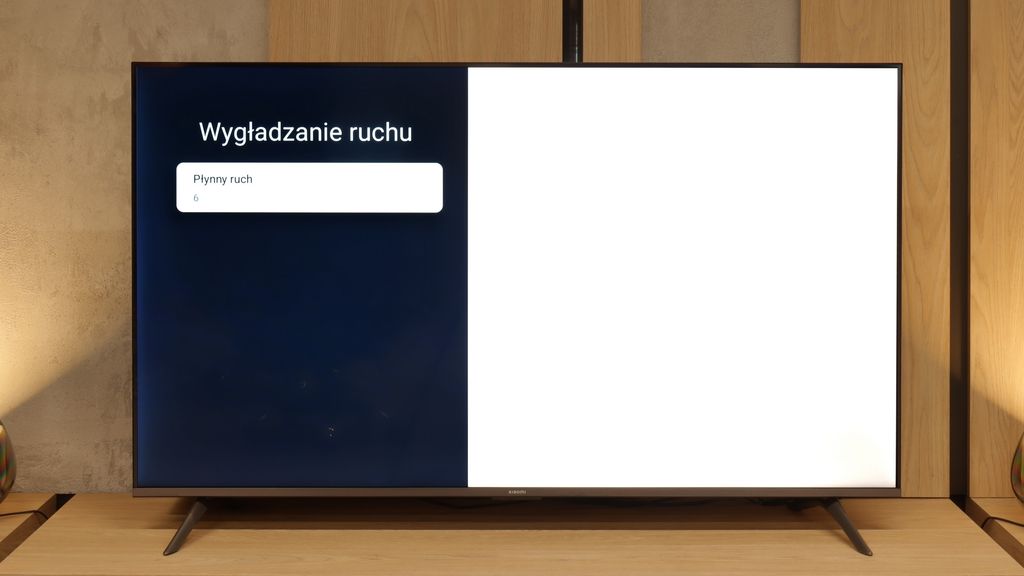
The motion fluidity in the Xiaomi A Pro 2026 is an interesting compromise that results from the hybrid matrix used here. At a native resolution of 4K, the maximum refresh rate is 60 Hz – sufficient for those who mainly watch movies and series. It is with them in mind that the manufacturer added a motion smoother, allowing users to adjust the image to their own preferences – one can opt for greater fluidity or leave it with more "cinematic" frames depending on the settings.
Blur (native resolution, maximum refresh rate):



Blur (BFI function enabled):



Smużenie (1440p@120Hz):



But… let’s go back to this “hybrid” construction. It turns out that despite the budget level where the Xiaomi A PRO 2026 sits, the producer offers something extra for gamers. At lower resolutions, such as 1440p or 1080p, the television can display images at 120 Hz. And here you can see a significant difference compared to the standard 60Hz refresh rate – it may not be on the level of the most expensive 4K@120Hz+ panels, as motion blur still occurs, but the higher refresh rate does the proverbial "job". Tests with "Little Green Man" showed that movement looks much better, and gaming becomes simply more enjoyable.
XIAOMI A Pro 2026 - Console compatibility and gaming features
3.6/10
ALLM: No
VRR: No
VRR range: No
Dolby Vision Game Mode: No
Correct implementation of HGIG: No
1080p@120Hz: Yes
1440p@120Hz: Yes
4K@120Hz: No
Game bar: Yes
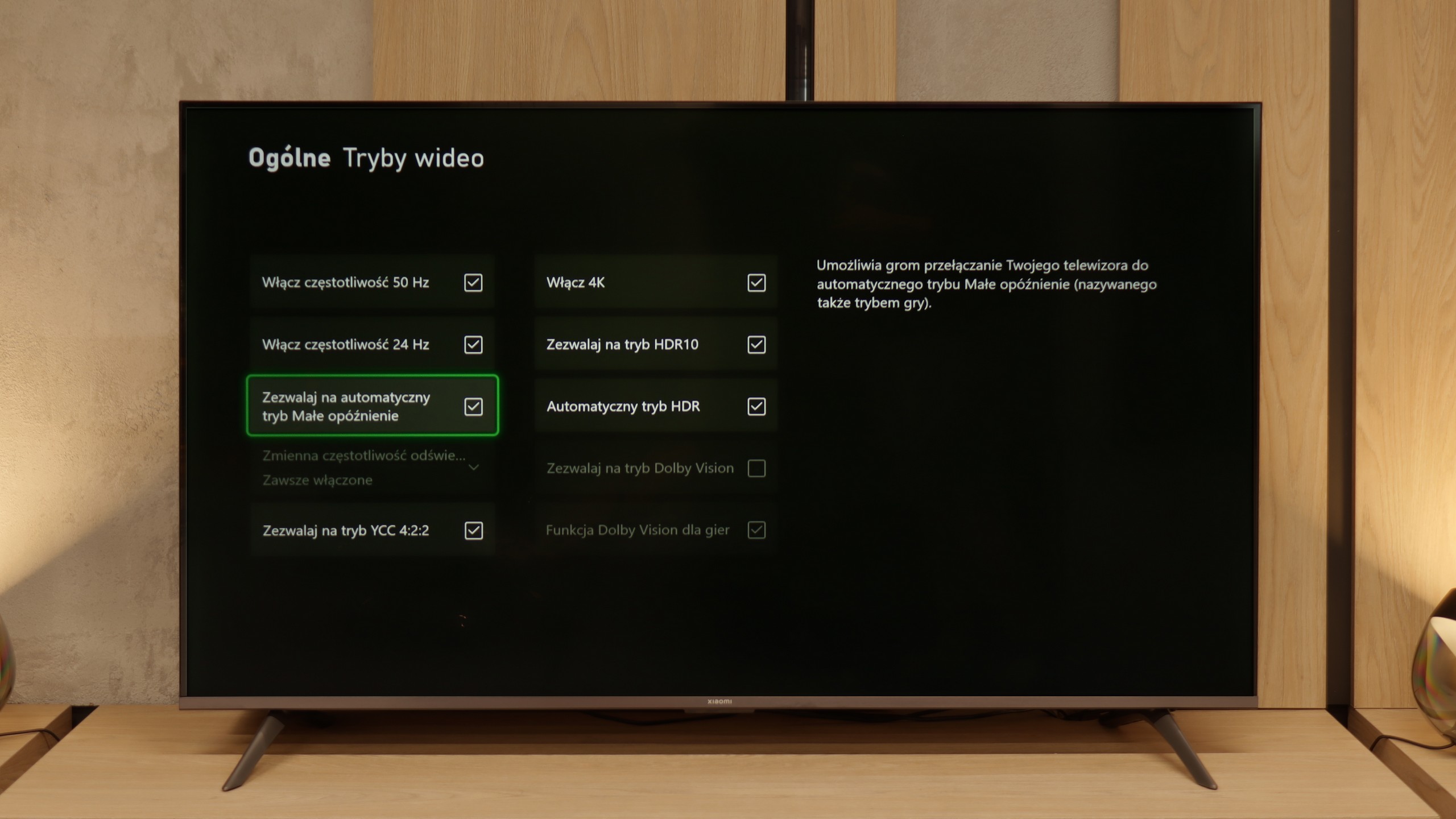
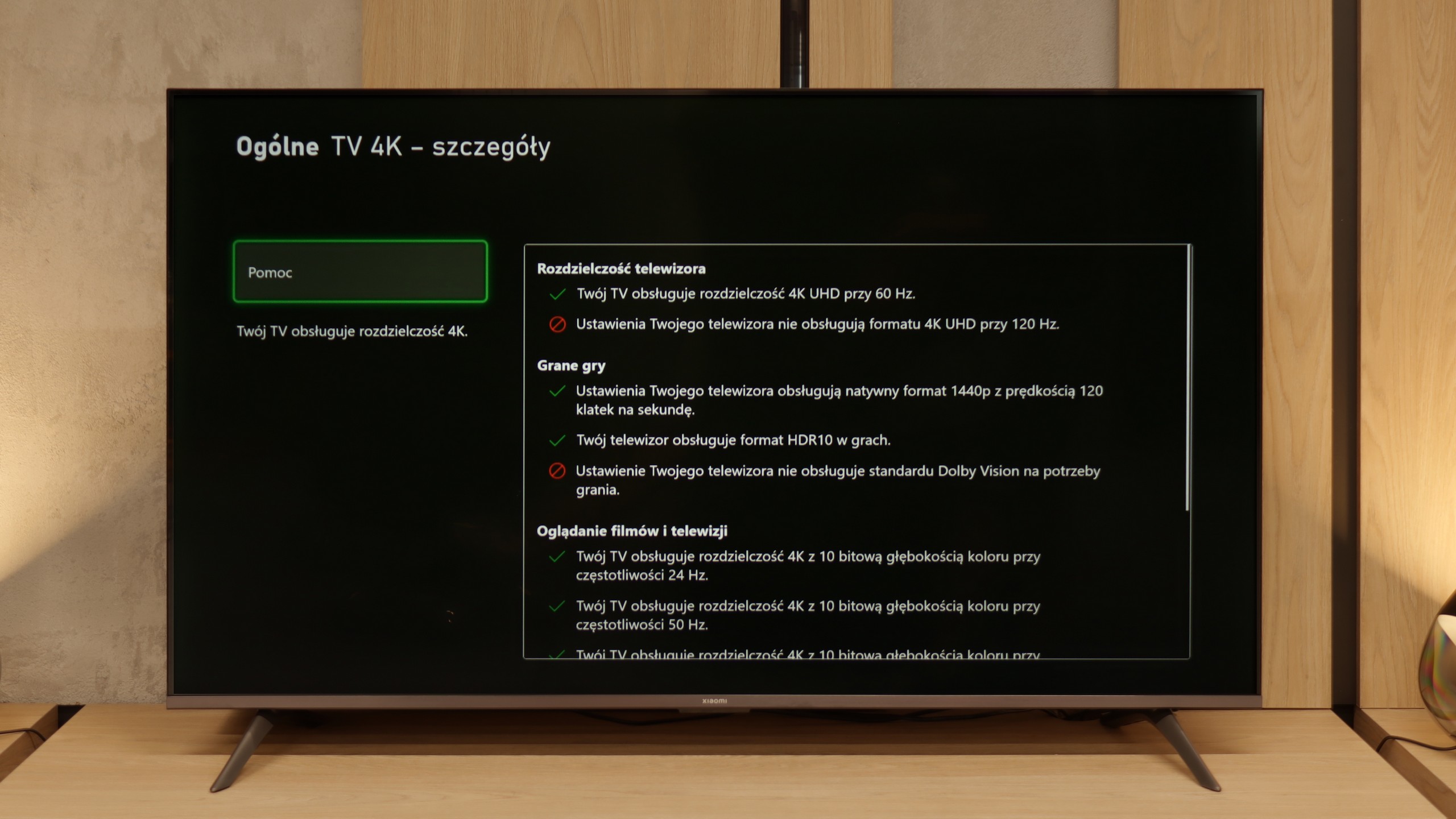
No indeed – since Xiaomi has added the "Game Boost 120 Hz" feature here, one might expect that they'd follow up with a solid gaming package. Unfortunately, reality quickly dampens that enthusiasm. Aside from this mode (which, it must be said, is a great addition in a budget build), we only have a rather peculiar player panel. It's hard to call it a full-fledged "game bar" – it's more of a simple overlay on the TV's Menu with limited options. And that’s about it. There’s no ALLM, so the TV won’t switch to game mode automatically. There’s no VRR, so you can forget about smooth frame synchronisation. We also won’t find support for Dolby Vision in games or the HGiG format, which are increasingly becoming the standard on consoles. In short: apart from Game Boost 120 Hz, which indeed allows for a more enjoyable experience at 1080p or 1440p, Xiaomi A Pro 2026 offers nothing that particularly appeals to gamers.
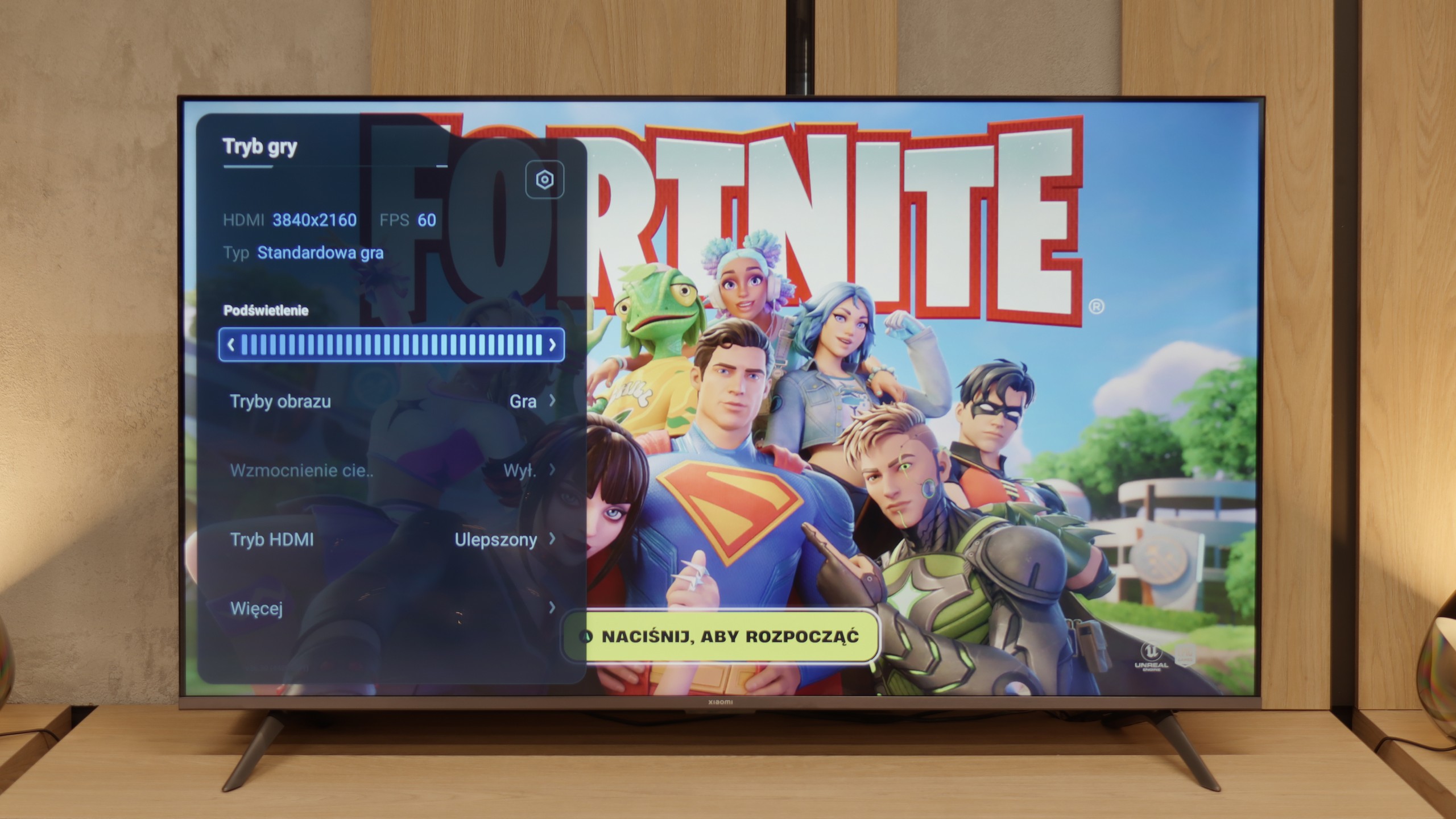
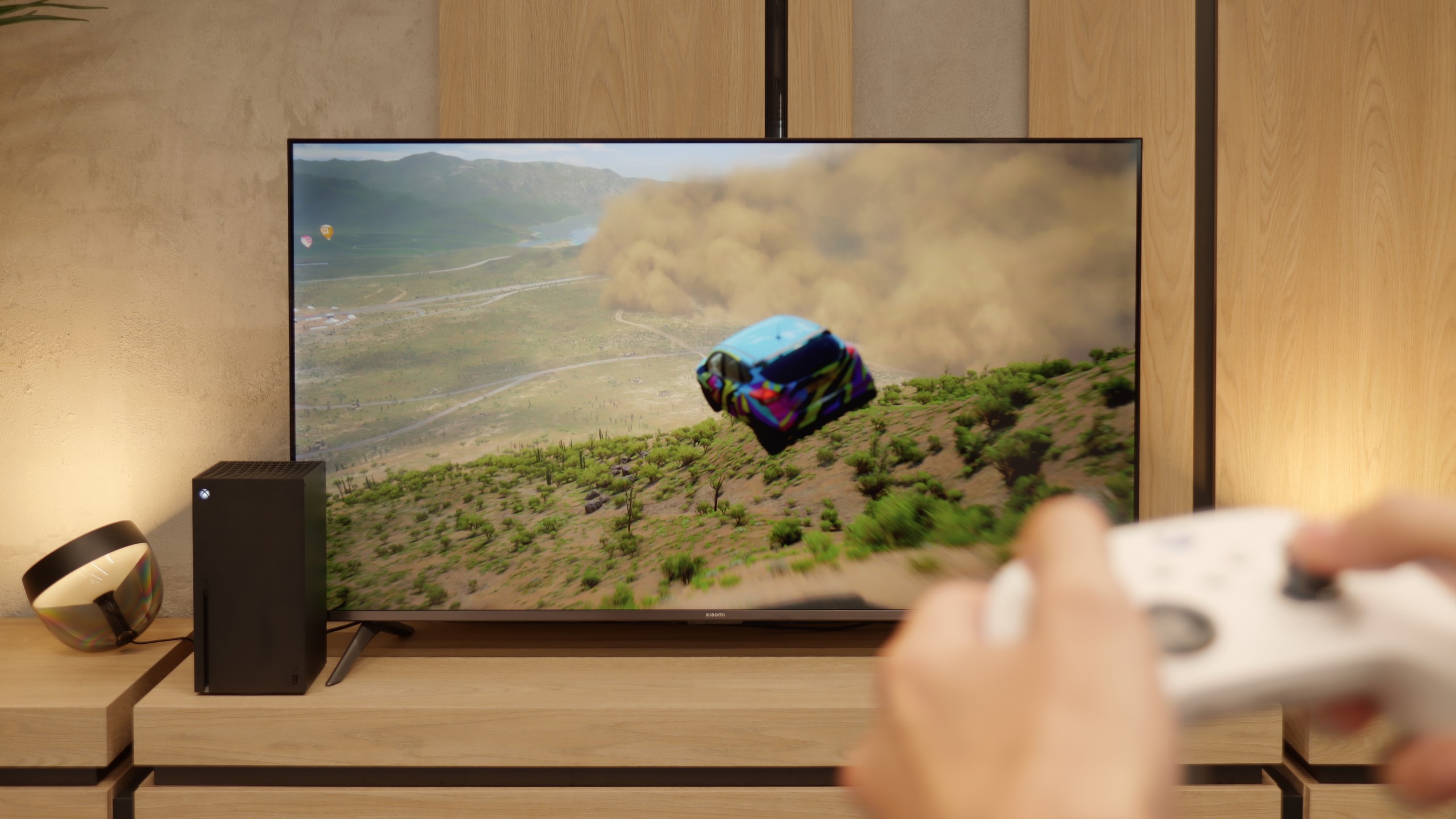

XIAOMI A Pro 2026 - Input lag
9.5/10
Input lag on the Xiaomi A Pro 2026 is quite decent and definitely isn't its weak point. The best results were achieved in 1080p@120 Hz and 1440p@120 Hz modes – there the TV drops below 10 ms, which can easily be called a phenomenal result and sufficient even for more demanding gamers. The situation changes with 60 Hz content – input lag then increases to around 25 ms. These might not be the best figures on the market, but for casual gaming or firing up the console in the evening, they will be fully acceptable. Especially since in most cases, it’s worth activating the 120 Hz mode, which is the most beneficial for gamers.
| SDR | HDR | Dolby Vision |
|---|---|---|
| 1080p60: 16 ms | 2160p60: 25 ms | |
| 1080p120: 8 ms | ||
| 2160p60: 25 ms |

XIAOMI A Pro 2026 - Compatibility with PC
2/10
Chroma 444 (maximum resolution and refresh rate): No
Font clarity: Good
Readability of dark text and shapes: Average
Input lag in PC mode (4K, maximum refresh rate): 25ms
Matrix subpixel arrangement: BGR
Max refresh rate: 60Hz
G-Sync: No
Xiaomi A Pro 2026 as a computer monitor? There's no beating around the bush – it’s very poor. While you can still utilise the 120 Hz mode in lower resolutions for gaming, the TV is completely unsuitable for everyday work. It lacks full support for chroma 4:4:4, so fonts appear blurred, and sometimes even rainbow-like. Additionally, there's strong dithering, which makes the image look uneven – some pixels shine brighter while others dimmer, and vertical lines can even break apart. In practice, this means that text (especially coloured and on dark backgrounds) becomes difficult to read. Light text manages to hold up somewhat, but it’s hard to talk about any real comfort. In this category, we give the Xiaomi A Pro 2026 a score of 2/10 (+1 for the additional high refresh rate mode), and there’s really no sense in elaborating on this further.
XIAOMI A Pro 2026 - Viewing angles
3/10
Brightness drop at an angle of 45 degrees: 63%
The Xiaomi A Pro 2026 features a VA panel, which immediately suggests that viewing angles are not its strong suit. When looking at the screen from the side, you will quickly notice a loss of quality – colours noticeably fade, and the whole image appears washed out. The drop in brightness may not be as drastic as in some constructions based on similar technology, but that doesn’t change the fact that it’s clearly a weak point of this model. If we plan to use it as a large, cheap screen for the lounge, one must take this limitation into account.
XIAOMI A Pro 2026 - TV efficiency during daytime
4.9/10


Matrix coating: Satin
Reflection suppression: Decent
Black levels during daytime: Good
The Xiaomi A Pro 2026 performs quite well during the day. The display has a satin finish that helps reduce reflections, so colours don’t lose their vibrancy, even when the room is bright. Just bear in mind that it’s not an extremely bright screen – the average brightness is around 350 nits. In an ordinary, moderately sunny living room, it’s sufficient, but if you have large windows that let in a lot of sunlight, it might simply be tough without blinds or curtains.
Matrix brightness
Average luminance SDR
XIAOMI A PRO 2026: 334 cd/m2
XIAOMI A Pro 2026 - TV features
6.1/10
System: Google TV
System performance: Poor
- HDMI inputs: 3 x HDMI 2.0, 0 x HDMI 2.1
- Other inputs: RCA (Chinch)
- Outputs: Toslink (Optical audio), eARC (HDMI), ARC (HDMI), Mini-Jack (Headphones)
- Network Interfaces: Wi-Fi 2.4GHz, Wi-Fi 5GHz, Ethernet (LAN) 100Mbps
- TV reception: DVB-T, DVB-T2, DVB-S, DVB-S2, DVB-C
Classic features:
Recording to USB (terrestrial TV): No
Recording programming: No
Picture in Picture (PiP): No
RF remote control (no need to aim at the screen): RF
Backlit remote control: No
Teletext: Yes
Audio only mode: Yes
Bluetooth headphones support: Yes
Simultaneous Bluetooth headphones & TV audio: No
Smart features:
AirPlay: Yes
Screen mirroring (Windows Miracast): No
Voice search: Yes
Voice search in native language: Yes
Ability to connect a keyboard and mouse: Yes








SmartTV- Google TV
The biggest plus of the Xiaomi A Pro 2026 is the Google TV system. It gives the television a second life – you can run almost any app on it, from Netflix and YouTube to music services and even lesser-known programs from the Google Play store. We are not limited to what the manufacturer has pre-installed, as is often the case with other budget televisions. On top of that, we have AirPlay, voice search via Google Assistant, and even integration with Gemini. We did experience some small hiccups – for instance, screen mirroring from a laptop didn’t always work – but despite these shortcomings, Google TV is a huge advantage of this model.
Classic TV functions
The Xiaomi A Pro 2026 can be described as a "senior-friendly" television. The large remote with a numeric keypad and a considerable number of physical buttons makes it intuitive to operate. Support for teletext and a clear EPG interface make it easy to use classic television functions. We won’t find many advanced features like USB recording or PiP functionality, but the presence of an analogue headphone jack output can be surprisingly practical for some users. It gives the impression that this is a set of features tailored to the needs of the most traditional viewers.
System stability
However, not everything works as it should. During testing, we encountered annoying system lags, issues with Miracast, and problems when switching audio sources. There were times when a reset of the television was necessary by unplugging it from the power. This only shows that while Google TV offers enormous possibilities, the stability can still be very problematic in such a budget-friendly model.
Sound connection options
HDMI audio:
Other audio outputs:
Toslink: Yes
Stereo (Mini-Jack): Yes
Wireless audio:
Bluetooth: Yes
Obsługiwane formaty audio:
Dolby Digital Plus 7.1: Yes
Dolby True HD 7.1: No
Dolby Atmos in Dolby Digital Plus (JOC): Yes
Dolby Atmos in Dolby True HD: No
DTS:X in DTS-HD MA: Yes
DTS-HD Master Audio: Yes
Ułatwienia dla seniorów
Numeric keyboard on TV: Yes
Font size adjustment: Yes
Audio description: Yes
XIAOMI A Pro 2026 - Apps
9.6/10























XIAOMI A Pro 2026 - Playing files from USB
6.8/10

| Maximum photo resolution: | Supported photo formats: |
|---|---|
The built-in media player in the Xiaomi A Pro 2026 is quite a conundrum. On one hand, it plays most popular audio and video formats without major issues. On the other hand, it can struggle with basic things like Polish characters. Files with letters such as ą, ł, ć, or ś in the name often refuse to open or display incorrectly. It looks strange, because we supposedly have codec support, yet the TV simply gets lost on straightforward matters related to the alphabet. Fortunately, this isn’t a huge problem, as thanks to Google TV we can simply install another player, like VLC. At that point, the issue with Polish characters totally disappears and media usage becomes seamless.
XIAOMI A Pro 2026 - Sound
5/10
81dB
Maximum volume
Supported codecs
(TV speakers)
Dolby Digital Plus 7.1
Dolby True HD 7.1
Dolby Atmos in Dolby Digital Plus (JOC)
Dolby Atmos in Dolby True HD
DTS:X in DTS-HD MA
DTS-HD Master Audio
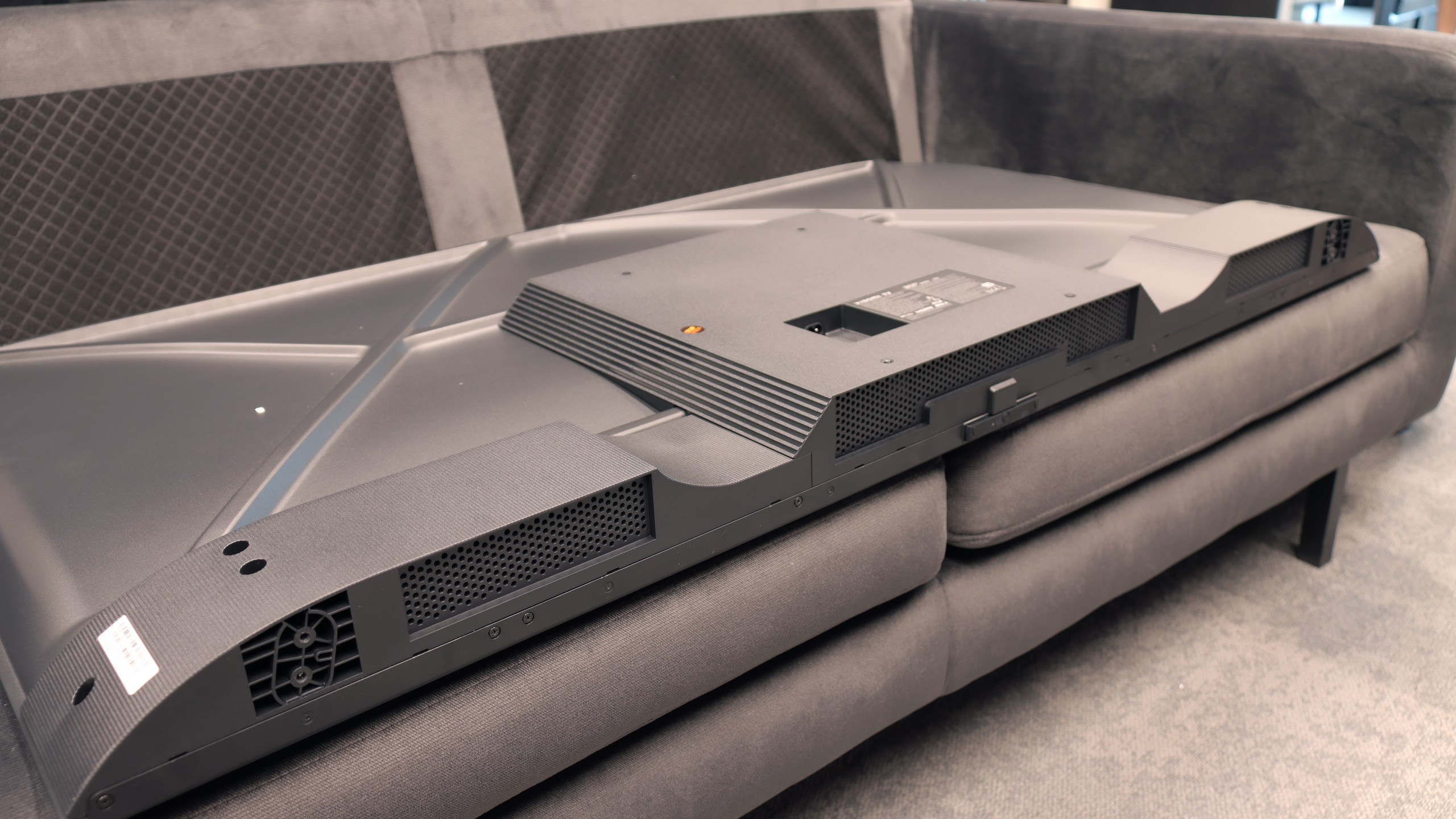
Last year, the Xiaomi A Pro 2025 surprised us with its pretty decent sound for a super budget segment television. Unfortunately, this year's edition – the A Pro 2026, has completely let us down. The sound feels like it's coming from underwater: flat, lacking any bass or depth. The only positive is the wide support for audio formats like Dolby Atmos and DTS:X, but in practice, it doesn't really change much. If you're considering this television, you'll need to factor in a soundbar straight away, as the audio experience without it will be quite disappointing.
Acoustic Measurements
81dBC (Max)
75dBC
XIAOMI A Pro 2026 - Details about the matrix
Software version during testing: UKN1.240806.017.V816.0.25.5.13.621.4.URTMIXM
Image processor: 4x ARM Cortex-A55 @ 1530 MHz
Subpixel Structure:
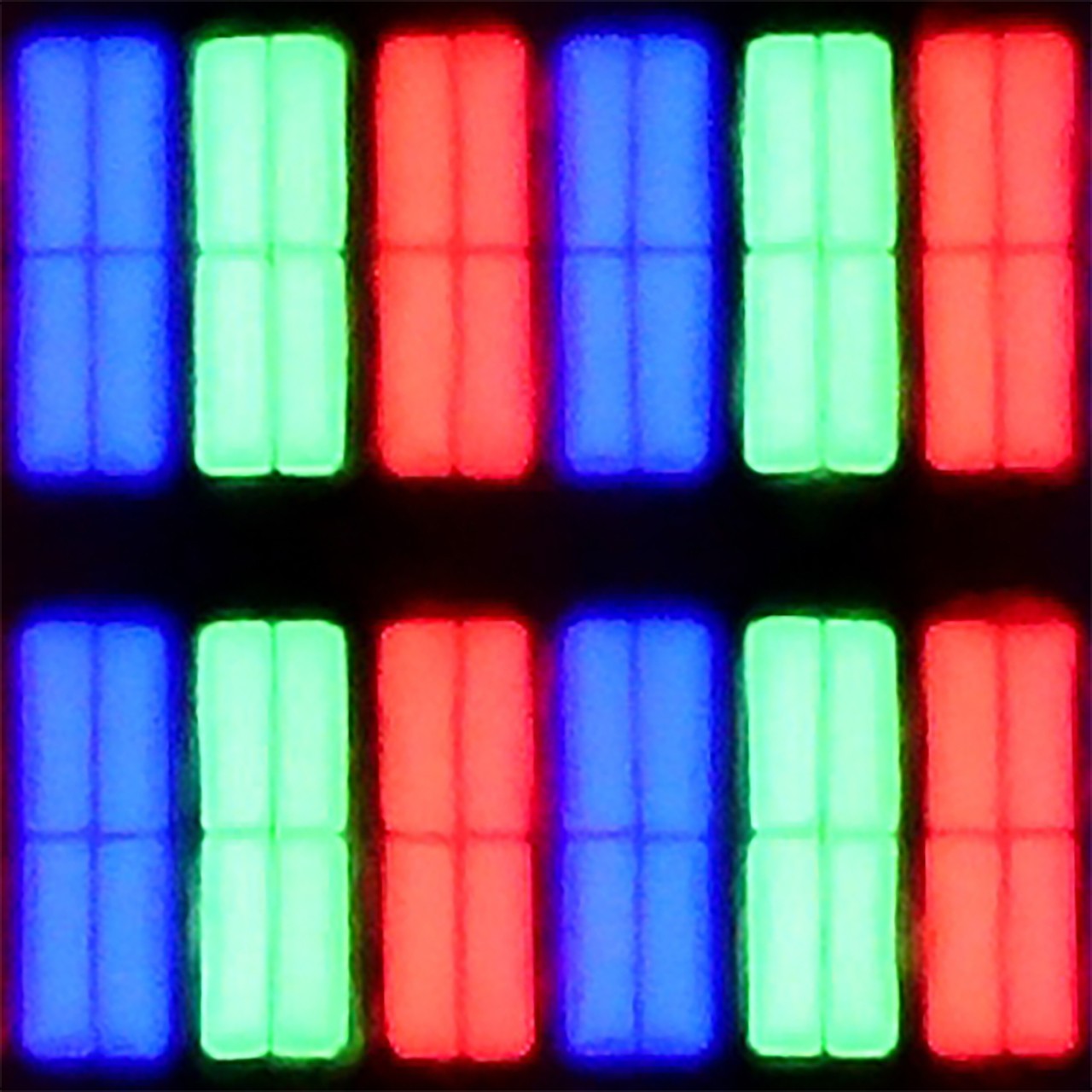
Panel uniformity and thermal imaging:
Backlight Type: PFS LED

Founder and originator of the "ChooseTV" portal

Journalist, reviewer, and columnist for the "ChooseTV" portal
See articles related to XIAOMI A PRO 2026:
4/3/2025






